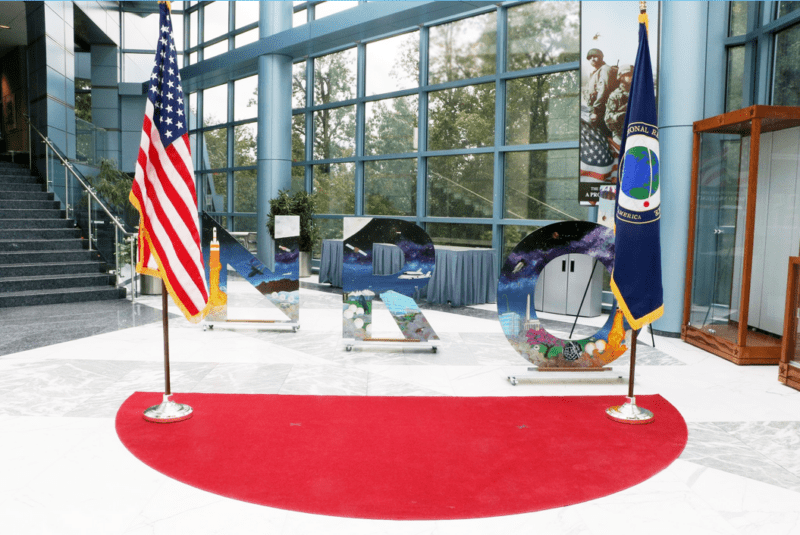Latest News

Photo: National Reconnaissance Office
The National Reconnaissance Office (NRO) said on Dec. 5 that it has awarded Airbus‘ U.S. space and defense division, Albedo Space, Hydrosat, Muon Space, and Turion Space Strategic Commercial Enhancements (SCE) contracts “to assess and leverage commercial electro-optical (EO) capabilities.”
In May, NRO released a draft solicitation on commercial EO and related phenomenologies to include infrared and non-Earth imagery.
In April, NRO Director Chris Scolese said the competition would be open to U.S. companies and U.S.-based subsidiaries of foreign-owned companies.
“The commercial EO market continues to expand with new capabilities and new providers,” NRO Director Chris Scolese said in a Dec. 5 statement.
Colorado’s Albedo Space, which said it specializes in building “very low Earth orbit satellites for ultra-high resolution imaging,” said that under the new, two and a half year NRO contract, the company “will collaborate closely with NRO to provide both near and long-term EO remote sensing capabilities via modeling, simulation, and data evaluation.”
“This effort will conduct accuracy and quality assessments such as the National Imagery Interpretability Rating Scale (NIIRS), which measures the clarity of images from satellites,” the company said. “Albedo plans to provide industry-leading, native 10 cm per pixel visible imagery, improving the current best commercial rating of NIIRS 5.6 to NIIRS 7.0, and unlock new intelligence use cases for the unclassified domain. Furthermore, Albedo also plans to provide nighttime imaging, non-Earth imaging, and video using its thermal LWIR sensor commercial capabilities.”
In May last year, NRO awarded Electro-Optical Commercial Layer (EOCL) contracts worth $4 billion over the next decade to BlackSky Technology, Maxar Technologies, and Planet Labs.
EOCL “is the largest commercial imagery contract effort ever awarded by NRO and is an operational subscription-type contract based on validated Intelligence Community and Department of Defense requirements,” NRO said on Dec. 5. “Comparatively, these SCE BAA [Broad Agency Announcement] commercial EO capabilities contracts are smaller in scope, are designed to assess emerging providers and capabilities, and intended to leverage those capabilities to meet mission needs.”
“These assessments are completed through a two-stage effort,” NRO said. “The first stage focuses on analytic studies to provide estimates of system capabilities at both the individual sensor and constellation levels, as well as business and cybersecurity planning. The second stage focuses on assessing on-orbit capabilities and procuring data products.”
Pete Muend, director of the NRO’s commercial systems program office, said in NRO’s Dec. 5 statement that last year’s EOCL contracts, six contracts for commercial hyperspectral imaging in March, six commercial radio frequency remote sensing contracts in September last year, and five commercial radar contracts in January last year “continue NRO’s historic expansion of the acquisition of commercial data.”
The NGA said that 90 percent of its “foundational data,” such as baseline maps used for navigation and maritime safety, comes from commercial companies and that commercial imagery is increasingly used for “tipping and cueing” NTM satellites with higher resolution cameras to take a closer look.
This story was first published by Defense Daily.
Stay connected and get ahead with the leading source of industry intel!
Subscribe Now